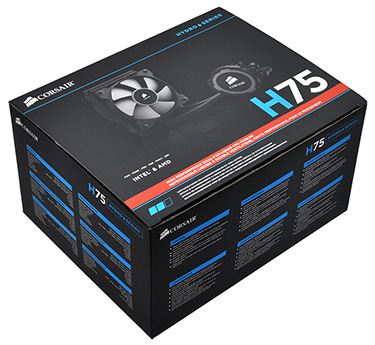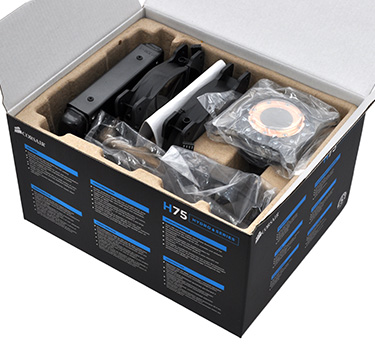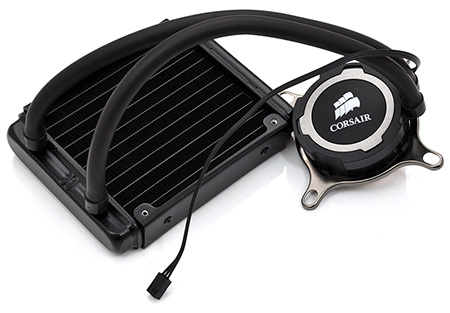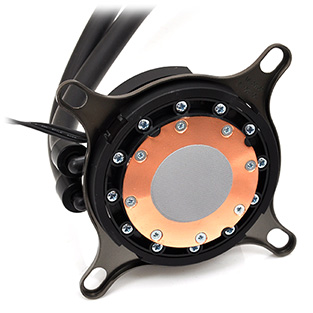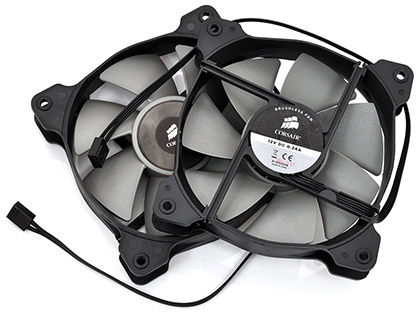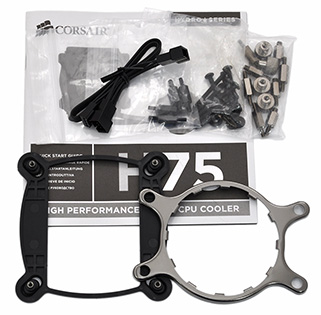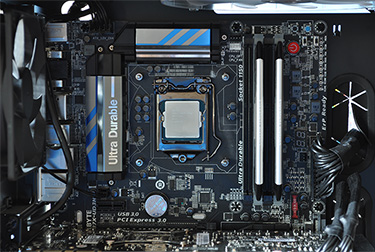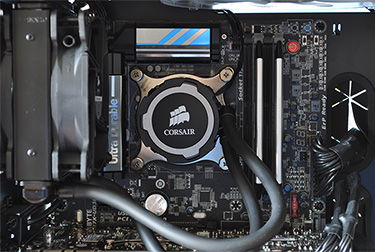Introduction
Corsair's burgeoning range of Hydro Series liquid coolers has become so varied that it can be difficult to pick out one particular model. The choices include 120mm, 240mm and 280mm options, and on top of that there are i-series models that tout Corsair Link integration.
There's no shortage of choice in the closed-loop, liquid-cooler market, but the solution that stands out right now is the Hydro Series H75. Available for £65, this recent addition to the range touts a slim 25mm-thick radiator, two fans for use in a pull-push configuration and a renewed focus on low-noise operation.
Presented in typical Hydro Series packaging, the H75 arrives well-secured and bundled with all the parts needed for mounting on any recent Intel or AMD socket. Retail availability is good - all of the popular UK outlets currently have stock - and, as has been the case with Corsair's previous liquid coolers, a five-year warranty is included as standard.
What we like about the H75 package is that Corsair has gone back to basics. There are no unnecessarily frills, no additional software is required and you won't find any flashy LEDs. The H75's simple promise is to provide "effective and efficient liquid CPU cooling in a compact size."
Compact is a word that's now used regularly by enthusiast PCs, and the H75 appears to be well-suited to small-form-factor builds. The 120mm radiator is just 25mm thick, the CPU block - with integrated pump - is very low profile, and the rubber tubing connecting the two is flexible enough to work well in most chassis.
The build quality of these core components is good, though it's worth noting that the CPU block doesn't offer the coloured accent rings that are available to the larger H105. Customisation won't be quite so simple, however the black-and-silver aesthetic is attractive enough. Corsair has done well to integrate the ceramic-bearing pump into such a slim block, and the underside offers a well-finished copper coldplate with a microfin design and pre-applied thermal paste.
Box contents include two SP120L fans - these are standard fare on most Hydro Series products - as well as mounting kits for Intel and AMD CPUs, a brief instruction manual and a Y-splitter cable. There's no spare thermal paste, though, so subsequent installations will require you to source your own.
The black-and-grey fan colour scheme matches up nicely to the radiator and pump, and both fans use four-pin PWM connectors allowing for precise speed control via motherboard headers. The splitter cable allows the fans to be attached to one four-pin header, helping save clutter, though remember you will also need an available three-pin header to power the pump.
There's hardly anything to it, and that's a good thing. Installing the H75 on an Intel LGA1150 socket is a simple four-step process; attach the backplate to the rear of the motherboard using four provided standoffs; fix the radiator/fan assembly to a 120mm mount using the eight provided screws; mount the pump on the CPU socket via four thumbscrews; then hook-up the power cables and you're good to go.
Experienced users would have the H75 installed in under 10 minutes and novices should have no trouble, either. Though this is a dual-fan solution, the relatively-thin radiator keeps size down to a reasonable level, ensuring the entire unit is compatible with most mainstream chassis. The only thing to be wary of is the plastic backplate: it isn't the strongest and can wear quickly. One of our standoffs is now turning freely as the worn plastic is no longer able to hold it steady, though this doesn't appear to have impacted performance.
In a nutshell, the Hydro Series H75 is shaping up to be the right cooler at the right time. We're seeing an increasing number of vendors attempt to squeeze desktop-grade performance into smaller chassis, and we suspect the H75 will prove popular in Mini or Micro ATX builds.






